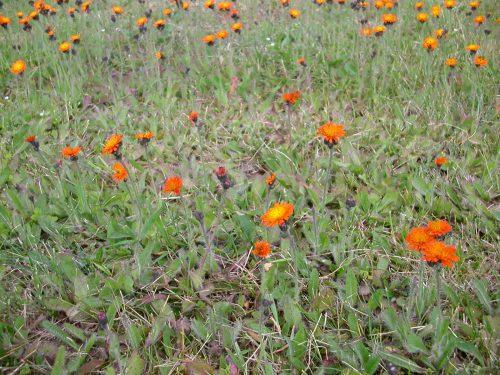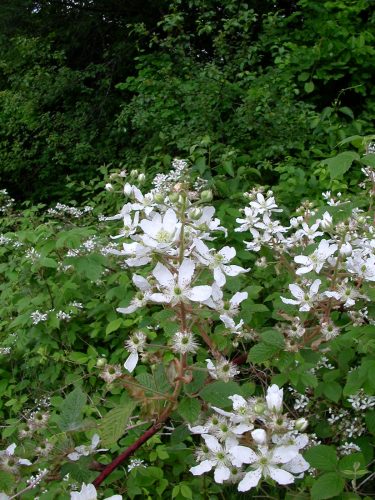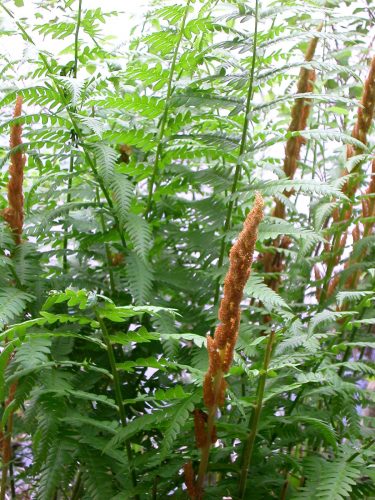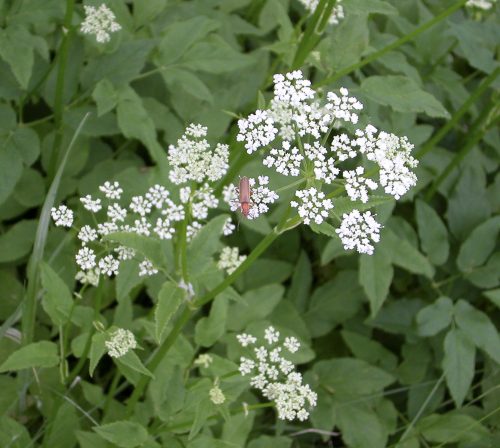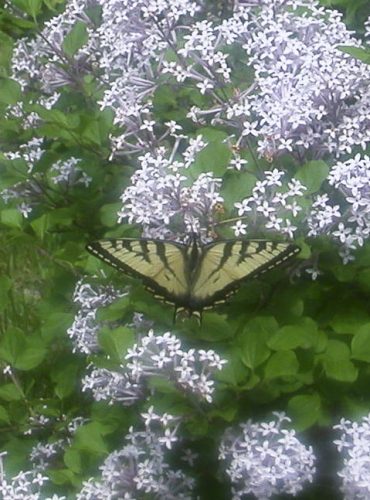“Everybody’s dancin’ in the moonlight
Everybody’s feelin’ warm and right
It’s such a fine and natural sight…”
Review: Bewitched (First Season)
June 30, 2017I decided to revisit this 60s comedy that I barely remember from my childhood to see how it stands up today, from my viewpoint as a witch. I was alternately pleasantly surprised and predictably annoyed by what I found.
This series debuted in 1964, the year of Gerald Gardner’s death. It is worth remembering that witches were not only around, but public and accessible at the time this show was created. The average person was likely unaware of the existence of real witches, but Gardener’s nonfiction account of how witches practice, Witchcraft Today, was published in 1954 and went through many printings. Anyone writing about witchcraft could easily find contemporary source material if they looked for it.
Bewitched was of course designed to entertain a predominantly Christian audience. While the theme of witchcraft had been popular in film from The Wizard of Oz to Bell, Book and Candle, early television was cautious about the material it presented to the public. In many respects, a show portraying witchcraft in a sympathetic light was edgy the day it premiered.
Bewitched was conceived as a way of showcasing Elizabeth Montgomery’s talents as a comedic actress. The production company was stretching to find a creative concept that utilized Montgomery’s range and came up with the housewife-witch character as a way of pushing past the limitations of the early 60s serial comedy. Other characters were also created with specific actors in mind.
The hocus-pocus in Bewitched called for camera tricks that stretched film crews, set designers, actors, and directors. For example, actors would need to hold or re-create a pose so that objects could be moved around or switched. There were some bloopers, for sure, but overall the spells worked and suspension of disbelief was maintained. You could say that special effects grew up through magic.
But it was the characters of Bewitched that engaged viewers over the following decades, not the camera tricks, which difficult as they were to achieve in 1964 didn’t impress for long. I was curious to know how my impressions of the characters and the show itself would have changed since I tuned in regularly as a child.
It speaks to the deep divisions between witchcraft in corporate entertainment and witchcraft in real life that, despite coming from a family that believed in psychic prophecy, communication with the dead, and finding things underground with sticks, I did not as a child draw any comparisons between my own family and Samantha Stevens’s. The divisions were too great to invite critical scrutiny. Even today, as the product of a more middle-class witch training, I don’t see much of myself or my life reflected in this show. One thing this show did get right is how outlandish, bizarre, petty, dysfunctional, unpredictable, and wonderful witch families can be. By “witch family,” I mean both blood relations and the larger witch community. We are a strange breed, yet we are real people living in the real world.
Being witches gave the characters permission to be unconventional or downright unbalanced, and for relations between characters to go beyond stock sexism into true pathology. Samantha’s father is ridiculous and self-absorbed, and he can be downright nasty. Only the knowledge that her daughter would never forgive her keeps Samantha’s mother from turning Darrin permanently into a toad. You somehow expected Samantha’s parents to be divorced, although divorce was still considered not-normal at the time. Bewitched served as a bridge between the Beaver Cleaver type of family and the 70s sitcoms that dealt with serious family conflicts and social ills.
Here is my impression today of the characters.
Samantha Stevens: Loved her then, love her now. How can you not love a character played by Elizabeth Montgomery? For one thing, she’s beautiful even in the silly dated 60s hairstyles and clothing. Samantha is a caring, compassionate woman, yet everyone always pushes that compassion too far, and then – watch out! After all, she is a witch.
Darrin Stevens: The word “sexist” was not in many peoples’ vocabulary in the early 60s, but that’s the only word for Darrin’s behavior toward his wife and Samantha’s placating attitude toward him. That aside, Darrin is a straight-laced fuddy-duddy, overly concerned with how he appears to others. He is also nervous, overly stressed, and reactive. And he’s funny. I did not appreciate before how great Dick York was at neurotic buffoonery. The man was a genius.
Endora: Everybody’s favorite, played by the wonderful Agnes Moorehead. Samantha’s mother and the character who never lent more truth on more levels to the phrase “my mother-in-law is a real witch.” What I like about her today is that she is so unapologetic and comfortable with who she is, never pretending to think or feel differently than she does. She serves as a nice foil for Samantha, who is constantly trying to fit in. Darrin has to be a bit of a stick-in-the-mud for us to sympathize with Endora’s position. I never understood what Samantha saw in him either.
Gladys Kravitz: Here I have to admit that I feel a twinge of guilt, looking back at how I once laughed at this character. Now that fewer women are home during the day to report break-ins or notice that an old person hasn’t been out in public in a while, the neighborhood busybody has been proved to have a purpose. She is not an unmitigated nuisance. The constant gaslighting of Mrs. Kravitz is cruel: she really does see what she thinks she’s seeing.
Aunt Clara: Sweet Aunt Clara. Somebody take the keys to the broomstick away from this woman. She is so adorable that you can laugh at her befuddlement but not take pleasure in her pain. Still one of the most endearing sitcom characters ever.
Episode in the first season most ahead of its time: “It Shouldn’t Happen to a Dog.” A sexual harasser named Mr. Barker is turned into a little dog by a frustrated Samantha. Here sympathy is placed with Samantha as target of the harasser and woman who is not believed even by her husband. The discomfort of the harasser is fodder for comedy when the tables are turned on him. I was hoping they would neuter him when he got dropped off at the vet.
Most sexist episode: A few contenders for this honor. I disliked episodes such as “The Girl Reporter,” where women use subterfuge, tricks, and betrayal to try to steal Darrin away from Samantha. What do women see in this man? It’s never quite clear. We are supposed to assume that the world is swarming with girls so desperate for a man they’ll do anything. Samantha, you can have him.
My favorite episode: “The Witches are Out.” A society of elder female witches decide something has to be done about the negative stereotypic portrayal of witches at Halloween. They enlist Samantha’s help, but, unbeknownst to her, Darrin the advertising executive is about to launch a stereotypic Halloween ad campaign for a candy company.
Bewitched holds up well after all this time. Yes, it’s sexist; just don’t binge watch it. The best part about the series is that it constantly makes fun of us and the “mortals” around us. A witch has to be careful about taking herself too seriously.
Flowering June
June 23, 2017The Queen of Worts
June 15, 2017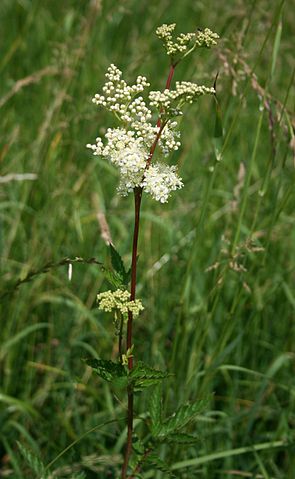
Meadowsweet was the first plant from which salicylic acid, or aspirin, was synthesized. It has traditionally been used for digestion as well as inflammation and pain, unlike plain aspirin which is hard on the stomach. Perhaps people were buried with Meadowsweet for a pain free experience in the afterlife.
Sources:
John Lust, The Herb Book (New York: Bantam Books, 1974).
Patricia Monaghan, The Encyclopedia of Celtic Mythology and Folklore (New York: Checkmark Books, 2008).
The Order of Bards, Ovates and Druids, “Druid Plant Lore,” http://www.druidry.org/druid-way/teaching-and-practice/druid-plant-lore
The White Goddess, “Meadowsweet,” http://www.thewhitegoddess.co.uk/herborium/meadowsweet.asp
Barbara G. Walker, The Woman’s Dictionary of Symbols and Sacred Objects (San Francisco: Harper and Row, 1988).
New Webpage is Up
June 15, 2017
I have updated the webpage hearthmoonrising.com and this page will be taking the place of the old website (hearthmoonblog.com). All of the material from hearthmoonblog has been transferred to this site.
You will find the latest blog post if you scroll to the end of the front page. There is a link to previous posts there as well. New material will be posted first to this front page of hearthmoonrising.com.
Why am I changing this website? The obvious reason is to make the page associated with me that is most accessed congruent with my name. There are other reasons, however. This new site is more mobile friendly and can be read more easily on a variety of devices. The new site allows more secure transfer of data, and so I have included a contact form. This is an integrated site that has everything related to my writing and work, and it will eventually replace all my other web pages, making it easier for people to find information.
It has been an intense months-long task to build the new site, and while most of the time and work was on my own computer, transferring the site rather than updating the old address has meant that there was no disruption in the blog.
An innovation that will not be directly obvious to my readers is that this site is designed to be easier to update. I can add and change data without going back and trying to figure out my own code. This should keep the site more up-to-date.
Lost Lookout
June 2, 2017Witches and Pagans: Women in European Folk Religion, 700-1100 (Review)
May 26, 2017 Max Dashu has posted significant excerpts of her multi volume project on the history of witchcraft at her Suppressed Histories website for years, and publication of her research in book form has been eagerly anticipated. This first installment (which Dashu refers to as Volume VII) covers the years 700 to 1100 – a good choice, because this period is critical to understanding the peak of the witch craze in late medieval and early modern times. This is also a period in European history where not a lot of information is available to the average Pagan.
Max Dashu has posted significant excerpts of her multi volume project on the history of witchcraft at her Suppressed Histories website for years, and publication of her research in book form has been eagerly anticipated. This first installment (which Dashu refers to as Volume VII) covers the years 700 to 1100 – a good choice, because this period is critical to understanding the peak of the witch craze in late medieval and early modern times. This is also a period in European history where not a lot of information is available to the average Pagan.
Dashu is explicit that she is writing for a lay audience, but this is a thoroughly researched and referenced work, with a large bibliography and over a thousand footnotes. There are some readers who will think she excessively belabors her points, but there is so much misinformation out there, often written by slipshod academics and well-intentioned Pagans who rely on these academics, that a solid scholarly work was sorely needed. The conclusions Dashu reaches will not be startling to better informed researchers inside and outside academia, but the weight of evidence on which she bases her findings is gratifying in this highly contentious field. No doubt there are many who will be surprised.
The book utilizes linguistic analysis, place names, archaeology, folk customs documented by clerics, early theological treatises on demonology and witchcraft, and mythology of pagan origin recorded by Christians. Dashu is well aware of the shortcomings of each of these methodologies and discusses them frankly. Still the amount of evidence, from many types of sources, leads to well grounded conclusions. This book mentions in passing some of the biases which hamper academic research on witchcraft, leading to often repeated yet erroneous beliefs that have seeped into Pagan discourse.
Dashu informs us that Pagan beliefs and shamanic practices not only survived well into the Middle Ages in supposedly Christianized regions, they were widespread and deeply adhered to, particularly by the lower classes. Shamanic practices and worship of goddesses and nature deities were equated with witchcraft and devil worship by clerics and formed the basis for persecution. Though trials for malefic sorcery also existed in pagan Rome, the intensity and tone of the Christian persecution was different and significantly broader, including for example healing and divination. Aristocratic government and church leadership were intricately connected and both used dispossession of pagan culture along with persecution of witches as a way of solidifying power. The healers, diviners, and keepers of tribal history known as witches were overwhelmingly female, and witch persecutions were part of a pervasive Church strategy to further subjugate women, who were already dominated by men within their pagan cultures. Dashu firmly establishes that for centuries the targets of the witch hunts were shamans, usually female, and that the purpose of witch persecutions was to establish Christian hegemony and solidify aristocratic power.
Dashu also attempts to piece together what those pagan belief systems and female shamanic practices that were under attack actually were, and here her findings must be treated as incomplete. She focuses a great deal on Germanic cultures, and practitioners of the various Germanic traditions will find a wealth of information here. She discusses the importance of the distaff in women’s mysteries and the Norse practice of “sitting out” to achieve psychic insight. She explores the little that is known about northern European goddesses. She devotes an entire chapter to the important Icelandic poem The Volupsa. This is not, however, a definitive look at any Norse tradition, and really to have attempted that would have taken this book too far afield. I have noticed a tendency in witches in my acquaintance to devote their reading solely to authors like Dashu who approach witchcraft from a solid feminist perspective. There would be nothing wrong with that if there were more Pagan writers with a true understanding of feminist theory, but there are not enough of us around to be so selective. If the material here sparks some new interest you will need to draw from a variety of sources on the runes and Norse literature. I was particularly dismayed to hear a friend say she was inclined to cut out any reference to the god Odin from her practice after reading this book. I am a Dianic priestess, and it is more than okay with me if a woman only wants to worship goddesses, but I think we must remember that male as well as female archetypes become distorted in support of male dominance. It is important that we recognize patriarchal bias in our Pagan heritage, but it is equally important that we do not stop there.
Witches and Pagans is slow reading and cannot be tackled in one or two sittings. Dashu’s writing style is clear and straightforward, but the nature of the material is that it is dense. An index would be helpful. There is a web address for an index in the book which took me to a 404 error page. There are quite a few line drawings in the book which add a great deal to the text. This is a great resource with a lot of helpful information. I hope we will not have to wait too long for the next volume of “The Secret History of the Witches.”
More on Recovery
May 19, 2017Personal Update
May 12, 2017
By the time this is published, I will be recovering from surgery for a torn knee ligament. It’s not nearly as big a deal as knee replacement, but I’m not sure what the time frame for my recovery will be. I could be blogging again next week, or I could be as elusive as this bittern.
At any rate, I am looking forward to happier trails. Blessed be.


